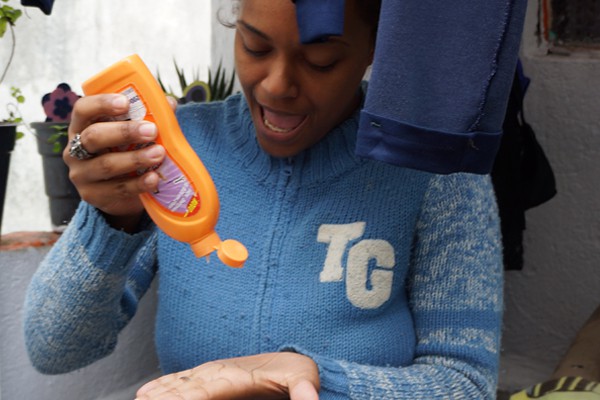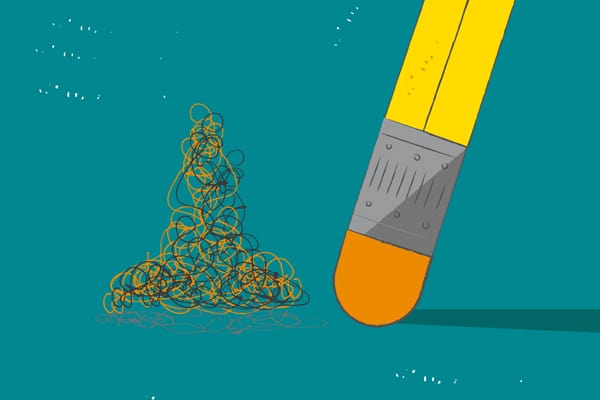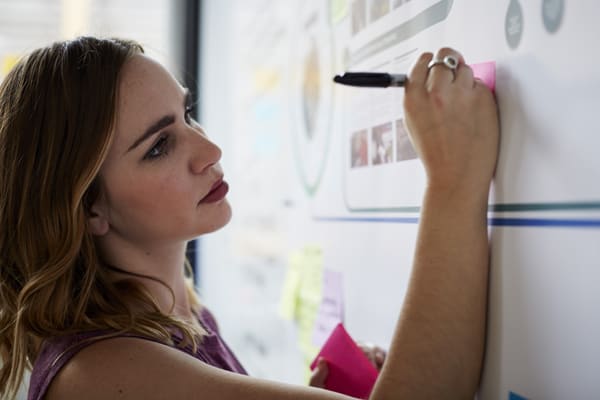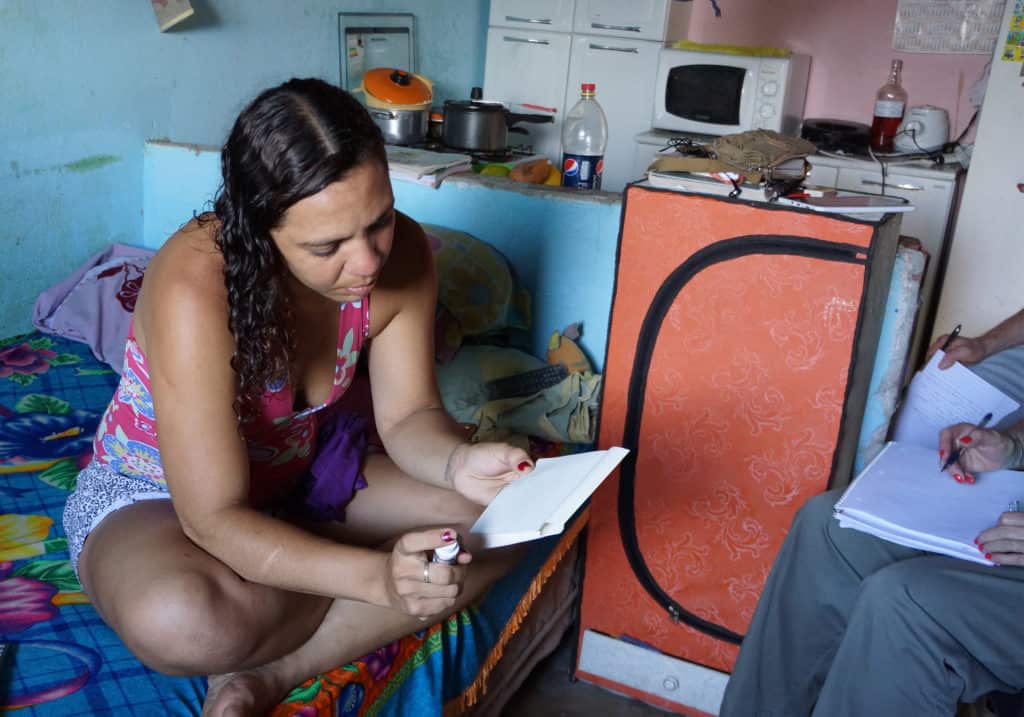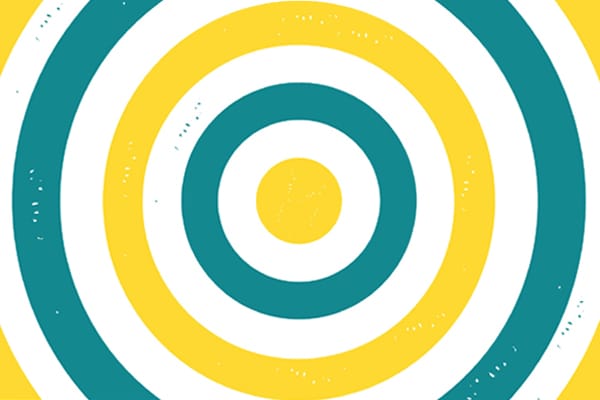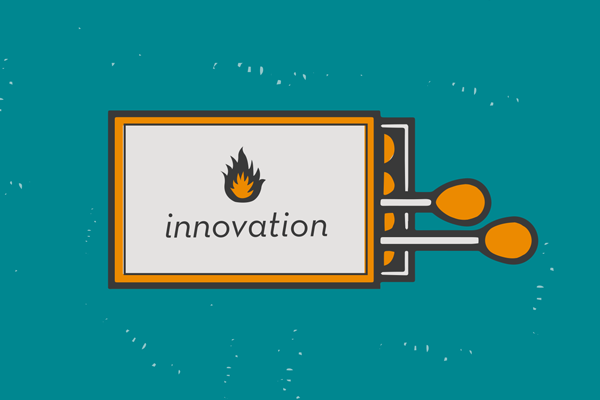Why Empathy and Customer Closeness is Crucial for Design Thinking
An understanding of people and culture is crucial for the success of design thinking initiatives. Here are some approaches that will help establish and maintain customer closeness and empathy throughout the process.
Traditionally, manufacturing and service industries have focused on technology, looking to generate benefits to give consumers not because they were needed but because they were possible. The underlying assumption was that customers would automatically value any breakthrough in technological power, no matter the shape or form. Today, we are experiencing a fundamental shift from an era of mass consumption to a new era of context and personalization—the context economy.(1) We are more intimate with technology than ever before. Technology is becoming ever more embedded, an ambient presence in our lives, and that means we are no longer consuming it as we once did, but rather living side-by-side with it. This level of intimacy has profound implications. We are less about needs (What do I want?) and more about activity and experience (How can I best take advantage of what I want to do in the way I want to do it?).
The personalization of value
Value is now personal, and consumer expectations are changing. Value is generated less through the selling and buying of goods and more through an ecosystem of information, services, experiences, and solutions. We are moving from a history of centralized power (in the form of corporations) to a landscape of very powerful people with very powerful technologies and the ability to self-author their lives. We are moving from a push model to a pull model where the “structure of the past is making way for greater personalization of the future.”(2) Corporations need to change from vigorously launching products and services at people to engaging them in an ongoing conversation and relationship. We are in the Age of the Customer, and empowered buyers demand a greater customer focus.
You can’t talk to yourself
Companies will have to walk away from the methods that got them where they are today. Competitive barriers of the past, such as manufacturing strength and distribution power, will no longer solely be enough to sustain companies. Industry boundaries are dissolving. Mass marketing and manufacturing are becoming increasingly diminished and less potent, and they’re not coming back. The result: It has never been more important for organizations to establish and maintain an intense focus and understanding of their customers’ lives. Customer knowledge informed by an empathetic mindset is critical for creating relevant new offerings that are both pertinent and differentiated, with design thinking popularized as the methodology to meet these rising challenges.
Make design thinking work harder for you.
We have seen a seemingly uncritical adoption of design thinking, with organizations rapidly scaling their efforts through one-day training sessions or week-long boot camps to keep pace with the prevailing zeitgeist. This investment is a good start, but organizations often have inflated and unrealistic expectations for innovation teams that lack the practical experience and tradecraft to drive results for their businesses. In many cases, initiatives led by design thinking have operated in a vacuum in which there has been little insight and an over-reliance on pure creativity (ideation). Does owning a chisel make you a master carpenter? We think not. Design thinking is not a Post-it Note university—a quick business panacea—but rather a methodology that has deep roots in social science and methods borrowed from sociology and anthropology. Organizations need to make their design thinking initiatives more powerful, impactful, and reliable to be a repeatable engine for growth. And this means going back to the fundamental tenet behind the methodology—empathy.
How can an organization learn empathy—and maintain it over time?
Organizations need to strive for greater levels of customer intimacy to be successful, and an empathetic mindset has never been more critical. Innovation teams practicing design thinking should follow five fundamental principles to connect with consumers and achieve their desired outcome:
1. Get comfortable with what you don’t know. Then get busy learning.
Innovation teams facing complex customer experience problems need to establish a robust knowledge base at the onset of a project. Review objectives, constraints, assumptions, challenges, and desired outcomes. Most important, align with your executive sponsors around the innovation intent. It needs to be a clear, unambiguous, measurable mission that everyone in the team can rally around with shared purpose, and achieve. Share, discuss, and document knowledge related to the business context, the business problem, and the target customer. Conduct secondary research, re-mine existing data, and interview internal stakeholders. Freely share the tribal knowledge (current beliefs, for instance, or project stories) that exists in your organization and work through the three fundamental questions listed below to identify knowledge gaps and sharpen your focus for the customer research plan.
What do you know about your customers?
Insights that can be supported by facts garnered from industry experience, current offerings in the market, and past research.
What do you think you know about your customers?
Insights, assumptions or hypotheses that need to be shaped and validated through additional research and prototype testing with customers.
What do you not know, but need to know about your customers?
Answer knowledge gaps with insights from new consumer research, and concept and prototype testing.
Now is the time the team should start digging deep into both the customer and business problems that need to be solved, staying focused, and avoiding distractions that can lead to wasted effort and strategic dead ends.
2. Shift Perspective. Get to Know Your Customer on Different Levels.
“Everyday life” is not always what you think. A core responsibility of an innovation team is to challenge preconceptions; organizations deeply held beliefs and assumptions regarding the customer experience. Understanding the customer is the job of everyone on the team—not just the designer, the marketer, or the insights specialist. Use primary and secondary research methodologies at both a macro and micro level to make sure your team is building customer empathy and ultimately answering the big strategic questions defined at the beginning of the project.
Develop Foresight. See the Big Picture.
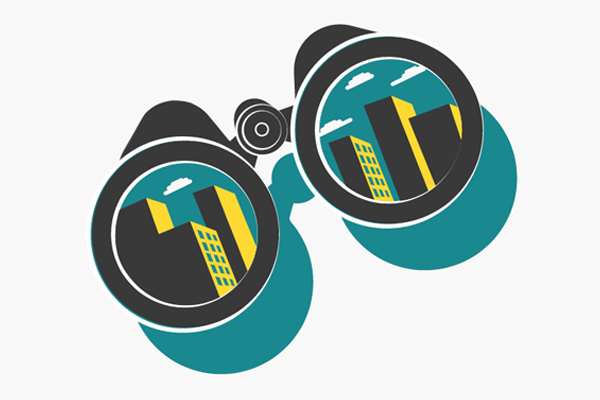 Design thinking projects can be overly focused on what customers have done in the past or are thinking about and doing today. To provide the team with foresight into the larger sociocultural, technological, and economic shifts that are going to influence and shape the customers you’ll have tomorrow; it’s important to understand significant shifts at the macro level. Identifying and studying relevant macro trends—large-scale, sustained changes in consumer interests—can help the team “empathize, define, ideate, prototype, and test in a much more holistic, emergent, and transformational way.”5
Design thinking projects can be overly focused on what customers have done in the past or are thinking about and doing today. To provide the team with foresight into the larger sociocultural, technological, and economic shifts that are going to influence and shape the customers you’ll have tomorrow; it’s important to understand significant shifts at the macro level. Identifying and studying relevant macro trends—large-scale, sustained changes in consumer interests—can help the team “empathize, define, ideate, prototype, and test in a much more holistic, emergent, and transformational way.”5
Love The New and Novel.
Many organizations are looking for new research methods to supplement or augment their core approaches for understanding their customers. With a host of powerful enabling technologies at our disposal, organizations are now able to engage customers in a very different way, on an ongoing basis, with relevant information, in real time. Leverage the array of digital platforms (for example, mobile phone studies, insight communities, social listening, sensors, wearables, and virtual reality) to engage customers in an ongoing dialogue throughout the project and an ongoing manner.
Do Deep.
One of the most impactful ways to gain empathy and insight into people’s everyday lives is to immerse yourself in the customer’s context. Ethnographic research (in-depth interviews, observation, shadowing, co-creation) is one of the most powerful methods for understanding people’s behaviors and experiences and how they feel about current and ideal experiences at the micro level. Ethnographic interviews usually consist of two- to three-hour one-on-one in-context interviews in the places where people live, work, and play. Ethnographic interviews are particularly useful for understanding how people behave and why they behave the way they do. This type of research uncovers what people say they do versus what they do, and what they need versus what is available today. It helps teams discover those differences and propose unexpected yet intuitive solutions to their problems.
Make Something Together. Co-Create.
Co-creation is an inclusive approach that empowers customers to express their perceptions, ideals, and subconscious feelings about a product, service, or experience—early in the process. Physical, visual, and verbal stimuli are used in co-creation exercises to help customers express their emotions, visualize their experiences, and generate concepts that bring the ideal experience to life.
3. Amplify Customer Stories, Insights, and Opportunities.
The use of visual models is readily associated with Design Thinking, with affinity diagrams and physical prototypes used to organize, analyze, and communicate insights and opportunities. Although these methods may be sufficient for simple innovation problems with single touch points, many teams will likely need a more sophisticated and rigorous approach to data analysis and synthesis.
Map and Model Customer Experiences.
Customer Journey Mapping is directly aimed at grappling with and providing clarity for this type of complexity and you to see and fully understand the customer experience from their perspective. “It is the process of tracking and describing all the experiences a customer has and understanding not only what they encounter, but also their visceral responses to their experiences.”6 As a strategic tool, it is excellent for capturing and presenting customer goals, behaviors, pain-points, emotional needs, and opportunities across complex customer experiences within a product, service, brand, or business ecosystem. This is critically important because you are often focused on individual touch-points, technologies, and products without a clear picture of the total customer experience.
Customer journey maps foster collaboration. In many organizations, ownership exists for touch-points and products, but not for the customer journeys that cut across them. This separation of functions, roles, and ownership within organizations prevents individuals from collaborating effectively to improve the customer experience. Most importantly, customer journey maps inform decision-making and investments by helping the team make sound decisions and investments that require an in-depth understanding of complex customer interactions, behaviors, needs, and underlying motivations.
Think First Person.
It’s critical that everyone ‘feels’ the empathetic drive and ability to refer to the customers who they are designing in the first person. Personas are one tool that can be deployed to ensure your teams and executives view the market and its challenges through the holistic context of a person. Personas help teams move beyond shallow customer understanding (e.g. demographics and consumption data) and focus on what’s in the hearts and minds of your target audience. Personas bring the voice of the customer (VOC) to life in an emotive manner and rally innovation teams around real customer goals, aspirations, and needs.
Personas are user archetypes that are synthesized from the ethnographic research data and captured in emotive and visually engaging formats (e.g. infographics, posters or videos). Because they are aggregated, inspired, and built from real customers, teams can use these tools to help gain focus, inspire creative thinking and inform decisions around customer experience design. By designing for the persona—whose values, goals, behavioral patterns, and pain-points are well understood—teams can satisfy the broader group of customers represented by that persona. Personas should communicate on three levels:
– Value Level: This is the most abstract level and refers to underlying human values and goals that people want to fulfill in their lives.
– Needs Level: This level conveys the rational and emotional needs that people have in certain situations and can be addressed through products, services or solutions.
– Solutions Level: This is more concrete than any of the other levels, referring to specific design principles that can guide the development of new products, services, and experiences that fulfill peoples’ needs and desires.
4. Solve the Problems That Matter.
One basic and fundamental issue innovation teams face is: Which problems matter most, and which ones should be the focus for the team over others? To help address these questions, we recommend that teams (1) reframe the problem, and (2) prioritize which problems and opportunities are worth pursuing.
Get Perspective – A Different One.
To sharpen focus, you should work through a process of reframing the problem. Reframing helps teams see new ways to solve a problem, or to see the “white space”—the area where there’s still room to maneuver—or simply to challenge previous understandings and beliefs and present a point of view that helps an organization understand how their customers see and perceive the world around them.
Reframing the problem provides multiple benefits to innovation teams and the organization at large. A powerful reframe sets the stage for change by shifting the perception of an underlying problem and illuminating opportunities related to a category, customer experience, business model, brand, or an entire business. Reframing aligns and focuses stakeholders, moving them towards a shared vision and creating the necessary buy-in and freedom to explore new terrain.
Have the Right Question Before Running Towards An Answer.
It can be dangerous when teams are not sure what problems they are setting out to solve. The problem is not always the problem, and open-ended problem statements contribute to this. Before you chase and explore every opportunity uncovered by your careful analysis, it’s critical to identify precisely the ‘problem to solve’ through an equivalent lens of the customer, the business, and an accompanying set of robust technical criteria rooted in the capabilities of your organization. You can only deliver meaningful innovations to market when you are focused on the right problem.
5. Illuminate Your Path to Market. Prototype Early and Often.
Design thinking is about learning in real-time. Test and shape concepts with both customers and business stakeholders in an iterative cycle of prototyping to fail fast and learn faster. When teams get to experiment throughout the development process, they are taking the necessary steps to reduce the risks of doing something new.
Iterate. Then Do It Again.
Run targeted, lightweight customer evaluation tests early and often to shape customer-centric concepts and solutions. Develop a learning plan to facilitate these experiments and test your hypotheses. Stage experiences and evaluate them iteratively with users to create a tangible way to discuss their latent needs and future desires. Prototyping is a fast and low-investment way of communicating initial user experiences, demonstrating advantages, and exploring barriers to adoption in a noncommittal, evocative, and exploratory way. This will yield unexpected insights that debunk assumptions and validate hypotheses, providing the team with data, insight, but most importantly the conviction to continue.
Stage The Experience.
As the development process moves along, it is important for teams to demonstrate the experience with higher fidelity and more immersive prototypes. Experience demonstrators are mid- to high-fidelity prototypes that can be used to help customers go beyond imagining a new concept to experiencing it. The prototype should be tangible, easy to understand and deliver a compelling multi-sensory experience that provokes discussion and feedback. This provides you with input at a very early stage of the innovation planning and development process long before full functionality of the product or service has been developed.
Run Small-Scale Pilots With Real People.
Once you have identified an offering that is desirable, viable, and feasible, you can launch small-scale pilots to test and refine the offering in the real world. Launch in-market with select audiences and define the mechanisms to measure the results of the experiments, and determine the key questions and hypotheses to answer. Pilots need to articulate the business case, test your assumptions and identify the resources (people, dollars, and time) required to scale the experience across the organization. Armed with the data from the pilot study, a robust business case, and a business plan, the team will find it much easier to make their innovation a reality.
What Does Getting Close to Your Customers Earn You In The End?
Fostering and maintaining an empathetic mindset throughout the design thinking process can lead to benefits at the cultural, operational, financial, and strategic levels of an organization.
Foster customer advocacy. At the cultural level, building and fostering customer empathy creates an “outside-in” point of view that forms a new narrative for executives and the whole organization. Real customer understanding cuts across functional silos and opens up new ways of working. This approach assigns ownership to every employee, making them accountable to the customer, driving change in mindset throughout the organizational culture.
Collaboration creates new value. At the operational level, customer empathy and insight foster new modes of collaboration both inside and outside the organization. Customer closeness creates a shared dialogue around the customer experience and yields opportunities for business functions from finance to IT to R&D and Marketing to collaborate and create new value.
Minimize risk and improve ROI. At the financial level, maintaining customer closeness minimizes risk. Working closely with customers throughout the innovation process helps innovation teams learn quickly and bring new offerings to market. Organizations will have the conviction to kill some projects quickly and fast-track others. As a result, precious resources can be focused on the initiatives that will generate the most value for both business and the customer.
Create competitive advantage and fuel growth. At the strategic level, empathy and a clear understanding of what motivates your customer are crucial for the business and is an essential element of good design. Good design creates a meaningful difference, meaningful difference drives competitive advantage, and competitive advantage accelerates organic growth.
REFERENCES
1. Josephine Green. Democratizing the future. Towards a new era of creativity and growth. (2007)
2. Ibid
3. Jonathan Dalton. Customer Journey Mapping: 10 Sure-Fire Steps To Success .., http://thrivethinking.com/2016/02/15/10-sure-fire-steps-to-effective-customer-jo
4. Josephine Green. Democratizing the future. Towards a new era of creativity and growth. (2007)
5. Design Thinking Must Be Future-Empowered – Kedge, http://www.kedgefutures.com/design-thinking-must-be-future-empowered/
6. Jonathan Dalton. Customer Journey Mapping: 10 Sure-Fire Steps To Success .., http://thrivethinking.com/2016/02/15/10-sure-fire-steps-to-effective-customer-jo


